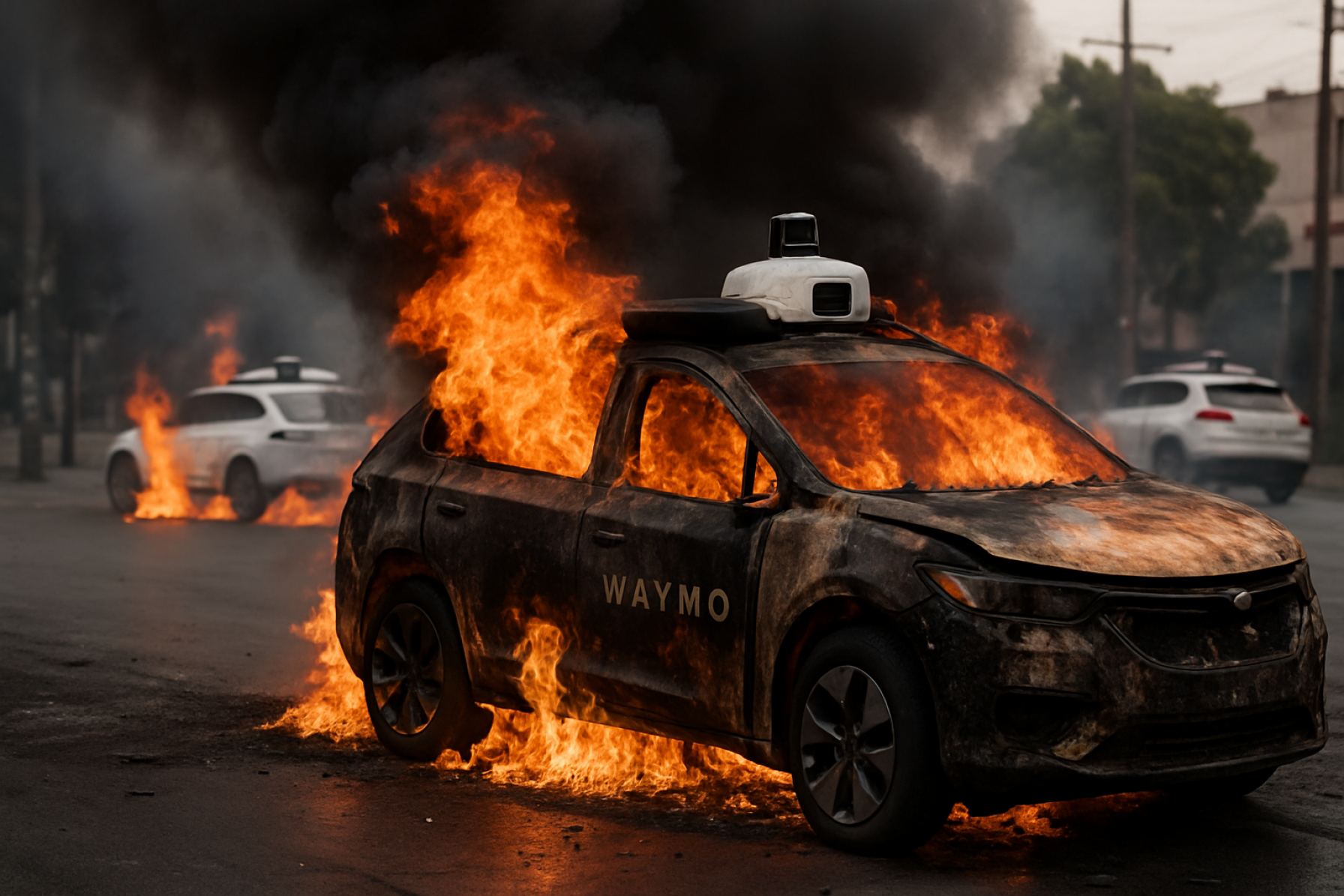Los Angeles Erupts: Protesters Turn on Waymo’s $600,000 Self-Driving Cars in Vicious Attack
Waymo autonomous cars targeted, vandalized, and set ablaze during mass LA protests—Tech industry rattled by escalating tensions in 2025.
- 5 Waymo vehicles destroyed in LA protests
- $600,000 estimated value of cars lost
- Waymo operates in 4 cities, plans 10 more by 2025’s end
- Tesla robotaxi rollout expected in multiple cities soon
Gripping scenes emerged last night as a wave of anti-deportation protests in Los Angeles spiraled violently, pitting demonstrators not just against police—but against technology itself. Several Waymo autonomous vehicles, summoned by agitators directly to the protest site, became rapid-fire targets for destruction.
By sunrise, five of Waymo’s prized self-driving electric cars, collectively worth over half a million dollars, lay charred and smashed on LA streets. Shocking videos posted on social platforms showed vehicles engulfed in flames, pummeled with bats, and spray-painted beyond recognition. As social feeds erupted with images and footage, the tech world was left stunned by this visceral rejection of automation on the frontlines of protest.
Q: What exactly happened during the LA protests?
During the escalating anti-deportation demonstrations on June 8th, small groups within the crowd used ride-hailing apps to dispatch Waymo cars to the scene. Instead of taking rides, they vandalized and set fire to the freshly arrived electric Jaguars, creating chaos and drawing a sharp police response. The deliberate targeting of self-driving tech amplified the unrest’s shock value across X and YouTube.
Q: Why are Waymo vehicles such high-profile targets?
Waymo, a subsidiary of Google‘s parent company Alphabet, operates one of the most advanced autonomous vehicle fleets in the world. Its Jaguar I-Pace models, bristling with expensive hardware—think LiDAR scanners, 360° cameras, and radar—are valued at over $100,000 apiece. The destruction underscored the vulnerability of high-tech assets amid social turbulence.
How does Waymo’s approach differ from Tesla and others?
Waymo leverages sensor-rich vehicles and robust AI compute systems to navigate city streets without drivers. In contrast, Tesla is pushing for a camera-only “vision-first” approach, with a neural network poised to enable fully unsupervised driving. Tesla plans to debut its own robotaxi fleet in Austin, Texas, next week—signaling intensifying competition and even greater public exposure.
What’s next for robotaxis and urban mobility in 2025?
Despite this setback, Waymo still eyes a big expansion—targeting 10 new cities, including Las Vegas and San Diego, by the end of 2025. But the attacks raise questions: How secure are these vehicles? How can companies and city agencies prevent future incidents? The incident may spur regulatory reviews and force new partnerships between tech and law enforcement to defend critical assets.
How to protect autonomous vehicles from protest violence?
- Enhance geofencing to avoid deployment in high-risk protest zones
- Upgrade onboard cameras to automatically detect and respond to threats
- Work with law enforcement and city planners to reroute fleets during civil unrest
- Deploy remote shutdown features for rapid response
Q: Where can you learn more about self-driving technology?
Follow ongoing developments at trustworthy sites like CNBC, Reuters, or directly from Waymo and Tesla.
Stay tuned as the world watches how autonomous driving adapts to the realities—and dangers—of urban 2025. Concerned about tech in your city? Keep informed and advocate for responsible rollout!
- Watch for updates on Waymo’s city expansion
- Follow tech safety innovations in urban transport
- Support stronger collaboration between tech companies and local authorities
- Stay informed—monitor trending news on social and trusted sources
